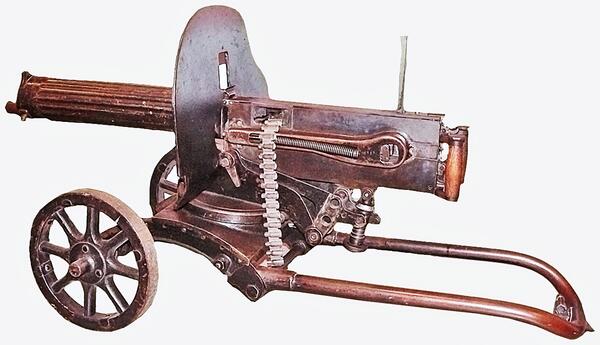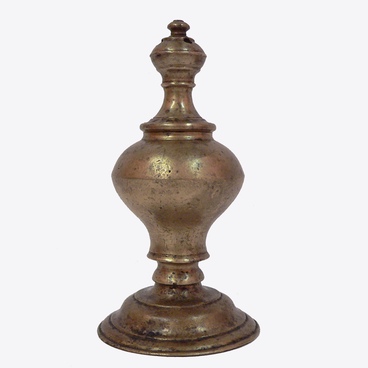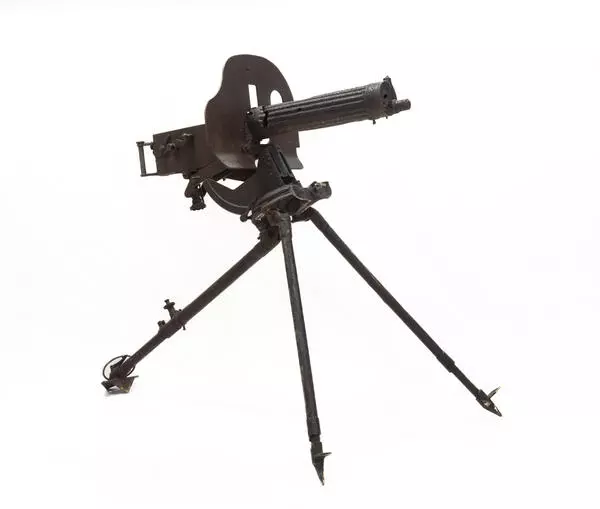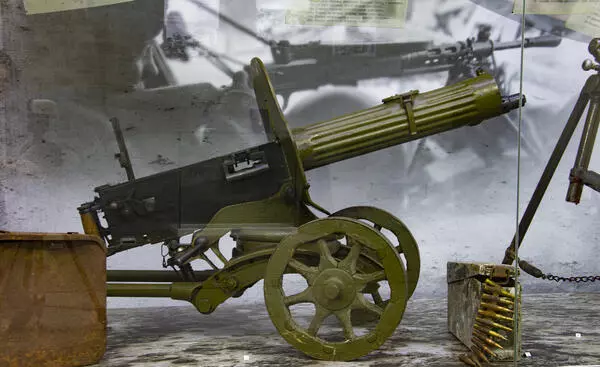The Machine Gun was developed by the British American gunsmith Hiram Stevens Maxim in 1883. After successful demonstration of the machine gun in Switzerland, Italy and Austria, the inventor came to Russia with a demonstration sample of the 45 caliber (11.43 mm).
In March 1904, a contract was signed with the firm ‘Vickers, Sons and Maxim’ for the production of Maxim machine guns at the imperial Tula arms factory. For the right to produce these weapons in Russia, the contract provided payment of 80 pounds sterling for each released unit over 10 years. After this period, the Russian military department reserved the right to release any number of machine guns without any payment of remuneration.
At the beginning of 1909, the Main Artillery Directorate announced a competition for the modernization of the machine gun, and the very next year a modified version was adopted: the 7.62-mm Maxim machine gun. This sample was revised at the Túla Arms Plant: its weight and armor shield were reduced, and some details were changed. Instead of an English wheeled carriage, a lightweight wheeled machine was installed.
The Maxim machine gun was the only example of a machine gun produced in the Russian Empire during the First World War. By the time of the announcement of mobilization in July 1914, the Russian army had 4157 machine guns. After the start of the war, the War Ministry ordered an increase in their output, but it was very difficult to cope with the task of supplying the army: there was not enough capacity in Russia, and foreign factories were loaded to the limit. During the war, the Russian industry produced 27,571 machine guns for the army, but these production volumes still could not meet the needs of the army.
The machine gun was in service with many armies before World War II, and in Russia it was actively used both in the Civil War and in the Great Patriotic War. It was in service with infantry and mountain rifle troops, border guards, the fleet, and was installed on armored trains and cars.
In the collection of the Kótlas Museum of Local Lore there is this training example of the machine gun, transferred from vocational school No. 3. From the very beginning of the museum’s work, the Maxim machine gun has been on display and is one of the most popular exhibits.
In March 1904, a contract was signed with the firm ‘Vickers, Sons and Maxim’ for the production of Maxim machine guns at the imperial Tula arms factory. For the right to produce these weapons in Russia, the contract provided payment of 80 pounds sterling for each released unit over 10 years. After this period, the Russian military department reserved the right to release any number of machine guns without any payment of remuneration.
At the beginning of 1909, the Main Artillery Directorate announced a competition for the modernization of the machine gun, and the very next year a modified version was adopted: the 7.62-mm Maxim machine gun. This sample was revised at the Túla Arms Plant: its weight and armor shield were reduced, and some details were changed. Instead of an English wheeled carriage, a lightweight wheeled machine was installed.
The Maxim machine gun was the only example of a machine gun produced in the Russian Empire during the First World War. By the time of the announcement of mobilization in July 1914, the Russian army had 4157 machine guns. After the start of the war, the War Ministry ordered an increase in their output, but it was very difficult to cope with the task of supplying the army: there was not enough capacity in Russia, and foreign factories were loaded to the limit. During the war, the Russian industry produced 27,571 machine guns for the army, but these production volumes still could not meet the needs of the army.
The machine gun was in service with many armies before World War II, and in Russia it was actively used both in the Civil War and in the Great Patriotic War. It was in service with infantry and mountain rifle troops, border guards, the fleet, and was installed on armored trains and cars.
In the collection of the Kótlas Museum of Local Lore there is this training example of the machine gun, transferred from vocational school No. 3. From the very beginning of the museum’s work, the Maxim machine gun has been on display and is one of the most popular exhibits.







